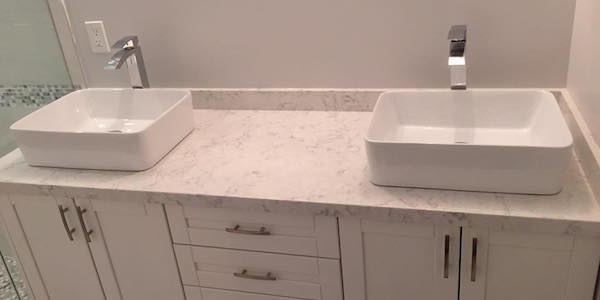When people think of saving water, they think about how they should cut down their minutes spent in a hot shower and turn off taps when they are brushing their teeth. These are great habits that everyone can get behind, but there are simple one-time changes that you can make to conserve more water. Before you start timing yourself whenever you decide to shampoo your hair look at these water-saving home improvements.
Showers:
Instead of cutting down your morning showers, you should get low-flow showerheads to cut down on your consumption of water — the update can save the average home over 1100 kWh of power and over 42,000 litres of water in a year. The environmental and engineering experts at Ecohome say that the swap is well-worth the costs since typical low-flow showerheads range between $10 to $50 and they can shave $100 off of household bills. This simple and inexpensive upgrade for your bathroom is proven to have a high return on investment.
Sinks:
Similar to showerheads, you can install low-flow faucets for water conservation. Homeowners that are working with a tight budget can purchase aerators and install them in their faucets if they are not included in the original design. These affordable and convenient tools mix air into the faucet stream so that you use less water, without the flow feeling too weak. Other perks of aerators are that they muffle the noise of faucets and focus their streams, so water doesn’t splash in different directions.
The Canada Mortgage and Housing Corporation’s sustainable plumbing guide recommends that homeowners have tap or faucet aerators with flow regulation settings in their sinks to reduce water consumption and potential energy-use for heating. They propose that people choose products that are certified by WaterSense, a program started by the U.S. Environmental Protection Agency that promotes water efficiency. Explore the guide to see other practical plumbing suggestions for cutting down on waste in kitchens, bathrooms, basements and more.
If you have a dripping faucet, you should have it fixed by a professional as soon as possible. It may seem like only a few droplets, but every single drip adds up to a lot of water waste when you put that repair on the back burner — you can lose around 1,200 litres in a year from a tap that has six drips per minute. Sit by your faucet to count the number of drops that hit the basin and then use the official website’s drip waste calculator to see how much unnecessary water goes down the drain. The calculator shows you an estimate of the amount in a single day, a month and an entire year.
Homeowners that want to be extremely cautious can hire plumbing services in Toronto to inspect the fixtures and pipes to see if there are any concerning leaks that they haven’t noticed. When they spot any problem areas, they can offer the repairs or replacements that you need to get your plumbing in top condition.
Toilets:
Toilets contribute to significant water consumption in a house, especially if you have more than one person living there. Older models used a lot of water for every single flush, depending on the decade it was made and installed. Ones made before 1980 used 7 whole gallons per flush and after 1980 shaved down that number to 3.5 gallons. If you haven’t had your toilets updated in a long time, think about getting new versions that are eco-friendly and ultra-efficient.
There are low-flow toilets that use approximately 1.6 gallons of water per flush so that you can still be confident that the fixture fulfills its initial purpose. Another water-saving option that tends to be a little more expensive because of its sophisticated design is the dual flush toilet — the cistern has two buttons that let you determine if less water is needed for liquid waste or more for solid waste. If you can’t decide on a new model for your replacement, you can contact a plumber for assistance. An expert can help you pick out the right water-saving toilet that matches your house’s interior design and your budget — you can call us for a free estimate to see just how much the updated fixture and the installation will cost.
Just like leaky faucets, running toilets can send up to 200 gallons of water down the drain. When you hear running water in your toilet tank when it should be finished flushing, you should have a plumber with years of experience come over to your house to thoroughly inspect the fixture and repair it as soon as possible. Your toilet could have a serious problem with its flapper valve, its overflow tube or its fill valve. If you notice that there are pools of water forming around the bottom of the toilet, there is likely a crack in the porcelain causing a leak. You will either need a plumber to fix or replace the entire fixture to avoid bigger breaks and flooding water.
Washing Machines:
When people give out eco-friendly tips for the household, they tell owners to start washing their clothes in cold water. The problem is that even when you choose a cooler temperature setting, an old-fashioned appliance can still waste a lot of water. There are great appliances out there that can help you automatically limit your consumption with every load of laundry — Energy Star certified clothes washers are famous for using 25 percent less energy and using 33 percent less water than standard front-loading machines. The modernized machines can also lessen the dampness of the clothes, so they won’t have to spend a long time in the dryer.
It’s always good to encourage daily water-saving habits, but they can be hard for people to achieve. Old habits are difficult to break, and the commitments easily slip your mind when you are occupied with something else. When you have fixtures and appliances with built-in water-saving features, you can limit your consumption without having to think about it for another second.





